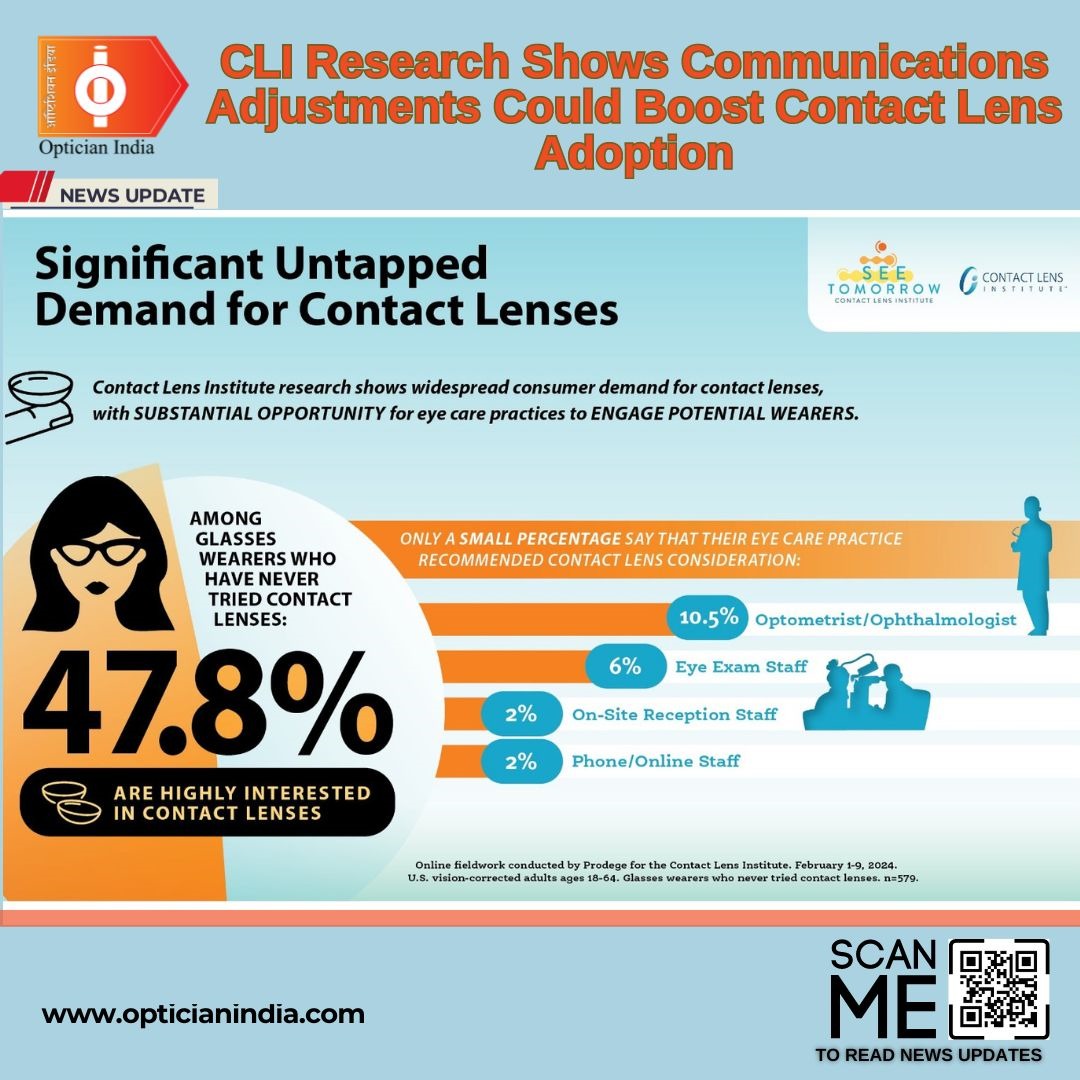CLI Research Shows Communications Adjustments Could Boost Contact Lens Adoption

Simple adjustments to how eye care practices communicate with patients may attract a significantly higher number of contact lens wearers, according to new data from the Contact Lens Institute (CLI). The industry association is previewing its latest See Tomorrow initiative consumer research at Vision Expo East this week, ahead of publishing an in-depth report next month.
The findings reveal significant untapped contact lens demand, with almost one in two (47.8%) glasses wearers who have never tried contacts saying they are highly interested. However, only one in 10 (10.5%) said their optometrist or ophthalmologist had recommended they consider contact lenses, with even lower rates for exam staff (6%), optical/eyewear display staff (3%), and administrative staff (2%) within the office.
|
|
“Our research has consistently shown that vision-corrected adults are waiting for their doctors to raise the possibility of contact lens wear—a straightforward action that enhances patient satisfaction and practice success,” said Stan Rogaski, CLI’s executive director. “This latest work delved even deeper into how that and other behaviors by practice teams play enormous roles in attracting or dissuading consumers from contemplating contact lenses and their many benefits.”
More than half (51%) of glasses wearers said their lack of contact lens trial was directly influenced by in-practice behaviors or lack thereof. Specific detractors included not having been asked about contact lenses (20%), not being told they were a candidate (19%), and not being provided with contact lens information (18%).
 |
The same respondents were also asked to weigh 25 factors that would influence their consideration of contact lenses—all actions largely within the control of offices. Having their eye doctor explain why contact lenses would benefit the patient ranked first (66%), followed by understanding how to insert and remove lenses (52%), being given trial lenses at their appointment (51%), having a wide range of price and performance options (47%), and being aware of contacts for specific eye conditions (46%).
 |
While underlining that the entire practice team should communicate the advantages of contact lens wear, the CLI research highlighted that the optometrist or ophthalmologist must not completely delegate that responsibility. The influence of the aforementioned doctor’s recommendation (66%) is markedly more influential among patients than recommendations from exam staff (22%) and from eyewear display staff (8%).
 |


3.jpg)
2.jpg)
1.jpg)
.jpg)
1.jpg)
.jpg)


1.jpg)



.jpg)
.jpg)



_(Instagram_Post).jpg)
.jpg)
_(1080_x_1080_px).jpg)


with_UP_Cabinet_Minister_Sh_Nand_Gopal_Gupta_at_OpticsFair_demonstrating_Refraction.jpg)
with_UP_Cabinet_Minister_Sh_Nand_Gopal_Gupta_at_OpticsFair_demonstrating_Refraction_(1).jpg)

.jpg)








.jpg)



.png)




